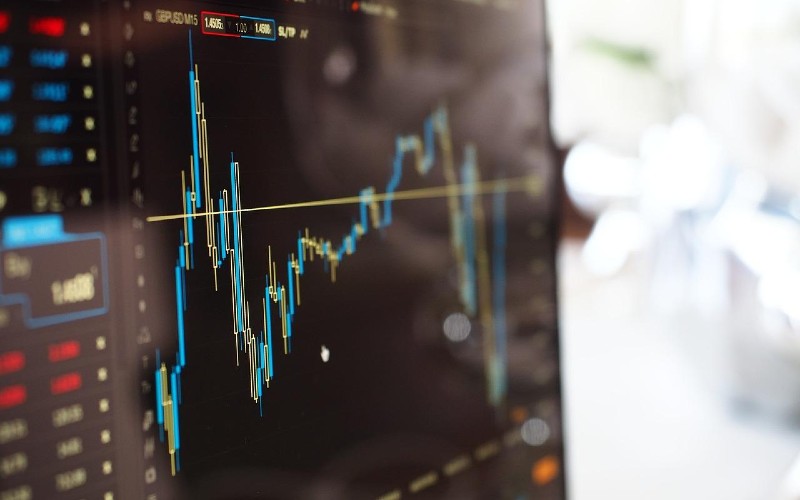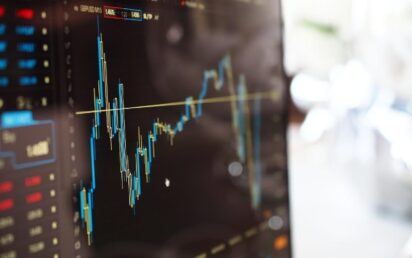Stock exchanges are the heartbeat of the global financial system, where investors buy and sell shares of publicly traded companies. These exchanges facilitate the flow of capital, enabling businesses to raise funds and providing investment opportunities for individuals and institutions.
As Jeremy Siegel, the Russell E. Palmer Professor of Finance at the University of Pennsylvania’s Wharton School, notes, “Despite occasional false alarms, the stock market is still considered an important indicator of future business conditions”, highlighting the critical role of stock exchanges in gauging economic trends.
So let’s explore the largest stock exchanges worldwide and underscore the importance of strategies and tools in trading which might help to gain success on the major stock exchanges.
Major Stock Exchanges Around the Globe
1. New York Stock Exchange (NYSE)
Located on Wall Street in New York City is the New York Stock Exchange (NYSE), which is ranked highest in market capitalisation. It was formed in 1792, and it still lists some of the biggest multinationals like Microsoft, Apple, and Amazon among others. With such stringent listing requirements on the exchange, one can be sure that only reputable companies trade there. For them to qualify for placement, they must demonstrate that they are both solid and of high quality. Even if you have never been interested in trading, you definitely saw this stock exchange in the movies, like The Wolf of Wall Street, for example.
2. NASDAQ
The second largest stock exchange in the world is also located in New York City and is known as NASDAQ. Unlike the NYSE, NASDAQ operates as an electronic exchange, meaning all trading is conducted through a computerized network. Some of the technology giants found within NASDAQ include Facebook, Alphabet, and Tesla among others. It is very crucial within the global financial systems since it specializes with technology sectors which have high growing stocks. NASDAQ and NYSE are the biggest stock exchanges in the US.
3. Tokyo Stock Exchange (TSE)
The Tokyo Stock Exchange (TSE) is ranked third in the list of biggest stock exchanges in the world in terms of market cap globally. Established in 1878, it trades the shares of renowned Japanese multinationals such as Toyota, Sony, and Mitsubishi; these are also ranked among the biggest and most influential companies in Japan. The TSE facilitates trading in Asian stocks thereby playing a significant role on the global business stage.
4. Shanghai Stock Exchange (SSE)
China is home to the Shanghai Stock Exchange (SSE), one of the leading stock exchanges worldwide when it comes to market capitalization. It was established in the year 1990 and has experienced exponential growth listing some of the biggest SOEs in China today including PetroChina, China Mobile, and Industrial and Commercial Bank of China. SSE plays a key role in driving the economic expansion of China.
5. FBK Markets
FBK Markets is a notable player in the financial markets, providing innovative trading solutions and investment opportunities. FBK Markets is popular among beginners and professionals because of its easy to use interface as well as wide ranging market analysis tools. Through offering different kinds of financial instruments such as; stocks, forex, commodities, and cryptocurrencies among others, FBK Markets helps in portfolio diversification so that traders can make educated choices. Additionally, FBK Markets keeps traders informed about any potential overnight fee that can apply to positions held after the market closes, helping them to better manage their investments.
6. Hong Kong Stock Exchange (HKEX)
Being a channel between the international market and mainland China, the Hong Kong Stock Exchange (HKEX) emerges as one of the busiest financial centers worldwide. HKEX was formed in the year 1891 and it offers shares for sale from different kinds of companies both multinational and domestic companies. This exchange is famous for bringing in huge amounts of foreign investment because it is well positioned and has very strong rules in place.
7. Euronext
Euronext is the pan-European stock exchange with operations in Amsterdam, Brussels, Dublin, Lisbon, Milan, Oslo, and Paris. Among the largest stock exchanges in Europe by trading volume of shares, bonds as well as other derivatives. This exchange enables trade and investment between different countries of the European monetary integration region.
The Importance of Strategies in Trading
Looking through all the biggest stock exchanges in the world one might feel ready to try trading. However, successful trading is not just about buying and selling; it requires well-thought-out strategies and a disciplined approach. Here are some key strategies and their significance:
1. Diversification
Investors can reduce risk by diversifying their investments among different types of assets, such as stocks, bonds, commodities, and even CFD trading. This means that if an investment underperforms, diversification will help mitigate its effects on the overall portfolio. There’s nothing difficult in this method.
2. Risk Management
Risk management is the process of recognizing, evaluating, and putting risks in order of importance, then trying to reduce the chances for bad events or their impact through planned activities of monitoring and control. Risk management requires important risk containment measures like stop-loss orders as well as position sizing. It is okay to fail at risk management for the beginners but experienced traders should pay more attention to it.
3. Long-Term vs. Short-Term Strategies
Long-term strategies, such as buy-and-hold, focus on holding assets for an extended period, allowing them to grow over time. Short-term strategies, like day trading or swing trading, capitalize on short-term price movements. It is important to define at the very beginning which of these strategies is yours.
4. Trend Following
Trend following is a strategy that involves buying assets when their prices are rising and selling them when prices are falling. It is based on the belief that prices tend to move in trends. We will also touch upon Trend analysis further in the text.
Tools for Trading: Technical Analysis
Traders heavily rely on technical analysis as it enables them to base their decisions on past price records and prevailing market trends thereby making informed choices. As a respected Financial market consultant from Nigeria Eno Eteng said: “To succeed as a commodities trader, you need to have a clear and consistent strategy for entering and exiting your positions, based on sound technical analysis”. This is especially important when deciding whether to hold a position overnight, as market conditions can change rapidly. Here are some essential components of technical analysis:
1. Chart Patterns
Chart patterns, such as head and shoulders, double tops, and triangles, are used to predict future price movements based on historical patterns. It is a common tool for everybody.
2. Indicators and Oscillators
Indicators, like moving averages, and oscillators, such as the Relative Strength Index (RSI) and Moving Average Convergence Divergence (MACD), help traders identify potential buy and sell signals.
3. Support and Resistance Levels
Support levels are price points where an asset tends to find buying interest, preventing the price from falling further. Resistance levels are where selling interest is strong enough to prevent the price from rising further.
4. Trend analysis
In technical analysis, trend analysis is vital because it helps in determining the course as well as evaluating the prevailing price movement. A trend may either be an uptrend (bullish), downtrend (bearish) or horizontal (sideways or ranging) with every kind having its own varieties such as short – term, medium – term or long – term trends.
Summary
It is important for players in the financial market to understand the largest stock markets across the globe as well as what they stand for. The NYSE and NASDAQ from the United States, TSE in Japan and SSE in China are some of the major stock exchanges in the global economy. In addition, FBK markets provide relevant data as well as chances for investment.
Investors can trade in the complicated financial markets effectively if they use strong trading techniques and take into account analysis factors. If they remain focused and stay informed, investors can invest wisely and in line with their objectives.
Author Bio
Crispus Nyaga, a financial analyst at 55Brokers, is highly experienced having worked extensively in the financial markets. Due to his capacity to convert difficult financial terms into something workable and knowledge on market dynamics, he has earned a reputation as a trusted voice in the industry.


